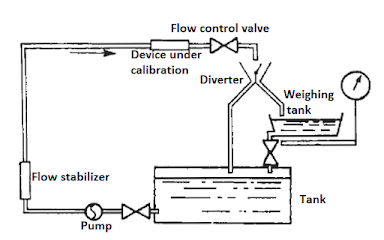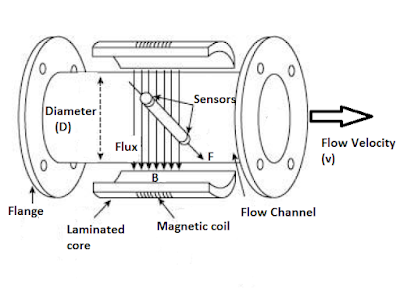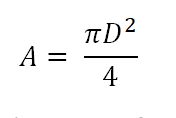Electromagnetic
flowmeters are widely used in industrial process flow measurement. These meters
come with several features for example: they offer non-invasive flow
measurement, they can measure reverse flows and are insensitive to viscosity,
density and flow disturbances. Additionally, electromagnetic flowmeters can respond
swiftly to flow changes and are linear devices for a wide range of
measurements.
Working Principle of the
Electromagnetic Flowmeter
Electromagnetic
flowmeter operation is based on Faraday’s law of electromagnetic induction. The
induced voltages in an electromagnetic flow meter are linearly proportional to
the mean velocity of liquids or to the volumetric flow rates. As in the case in
many applications, if the pipe walls are made from non-conducting elements,
then the induced voltage is independent of the properties of the fluid.
Faraday’s
law of induction states that if a conductor of length l (m) is moving with a
velocity v (m/s) perpendicular to a magnetic field of flux density B (Tesla)
then the induced voltage (e) across the ends of a conductor can be expressed
by:
e =
Blv
This is
demonstrated in the figure below:
 |
| Figure 1.0 The Operational principle of electromagnetic flowmeter |
In the above
illustration, the magnetic field, the direction of the movement of the
conductor, and the induced emf are all perpendicular to each other.
Let’s consider
a simplified electromagnetic flowmeter construction below:
Figure 1.1 Construction of practical electromagnetic flowmeter
The
externally located electromagnets create a homogenous magnetic field (B)
passing through the pipe and the liquid inside it. When a conducting flowing
liquid cuts through the magnetic field, voltage is generated along the liquid
path between the two electrodes positioned on the opposite sides of the pipe.
The
conductor is the liquid flowing through the pipe, and the length of the
conductor is the distance between the two electrodes, which is equal to the
tube diameter (D). The velocity of the conductor is proportional to the mean
flow velocity (v) of the liquid. Hence, the induced voltage becomes:
e = BDv
If the
magnetic field is constant and the diameter of the pipe is fixed, the magnitude
of the induced voltage will be proportional to the velocity of the liquid. If
the ends of the conductor, in this case the sensors that are connected to an
external circuit, the induced voltage causes a current, i to flow, which can be
processed appropriately as a measure of the flow rate.
Electromagnetic
flowmeters are often calibrated to determine the volumetric flow of the liquid.
The volume of liquid flow Q can be related to the average fluid velocity as:
Q = Av
Where A is
the area of the pipe, which can be written as:
That gives the induced
voltage as a function of the flow rate:
We know that fluid velocity
v = Q/A
We can derive the
induced voltage as:
Equation 1.4 indicates
that in a well-designed electromagnetic flowmeter, if all other parameters are
kept constant, the induced voltage is linearly proportional to the liquid flow
only.
Even though the induced
voltage is directly proportional to the mean value of the liquid flow, the main
problem in the use of electromagnetic flowmeters is that the amplitude of the
induced voltage is small relative to extraneous voltages and noise. The noise
sources include:
- Capacitive coupling between signal and
power circuits.
- Stray voltage in the process liquid.
- Capacitive coupling in connection leads.
- Inductive coupling of the magnets within
the flowmeter.
- Electromechanical emf induced in the
electrodes and the process fluid.
Key Merits of
Electromagnetic Flowmeters
The electromagnetic
flowmeters have the following advantages:
- The output (voltage) is linearly
proportional to the input (flow).
- There is no obstacle to the flow path
which may cause reduction in pressure.
- The electromagnetic flowmeter can measure
flow in pipes of any size provided a powerful magnetic field can be produced.
- The output is not affected by changes in
the characteristics of the liquid such as pressure, viscosity, and temperature.
You can also read: Working Principle of Ultrasonic Flowmeter
Shortcomings of
Electromagnetic Flowmeters
The electromagnetic
flowmeters have the following limitations:
- The conductivity of the liquid being
measured should not be less than 10 μꭥ/m.
It is important to note that most water based/aqueous solutions are
adequately conductive while a majority of hydrocarbons solutions are not
sufficiently conductive.
- The operating cost is usually very
high in an electromagnetic flowmeter specifically if heavy slurries are
handled.
Related resource: Ultimate guide to Industrial flow Instruments
Don't miss out on key updates, join our newsletter list here.






